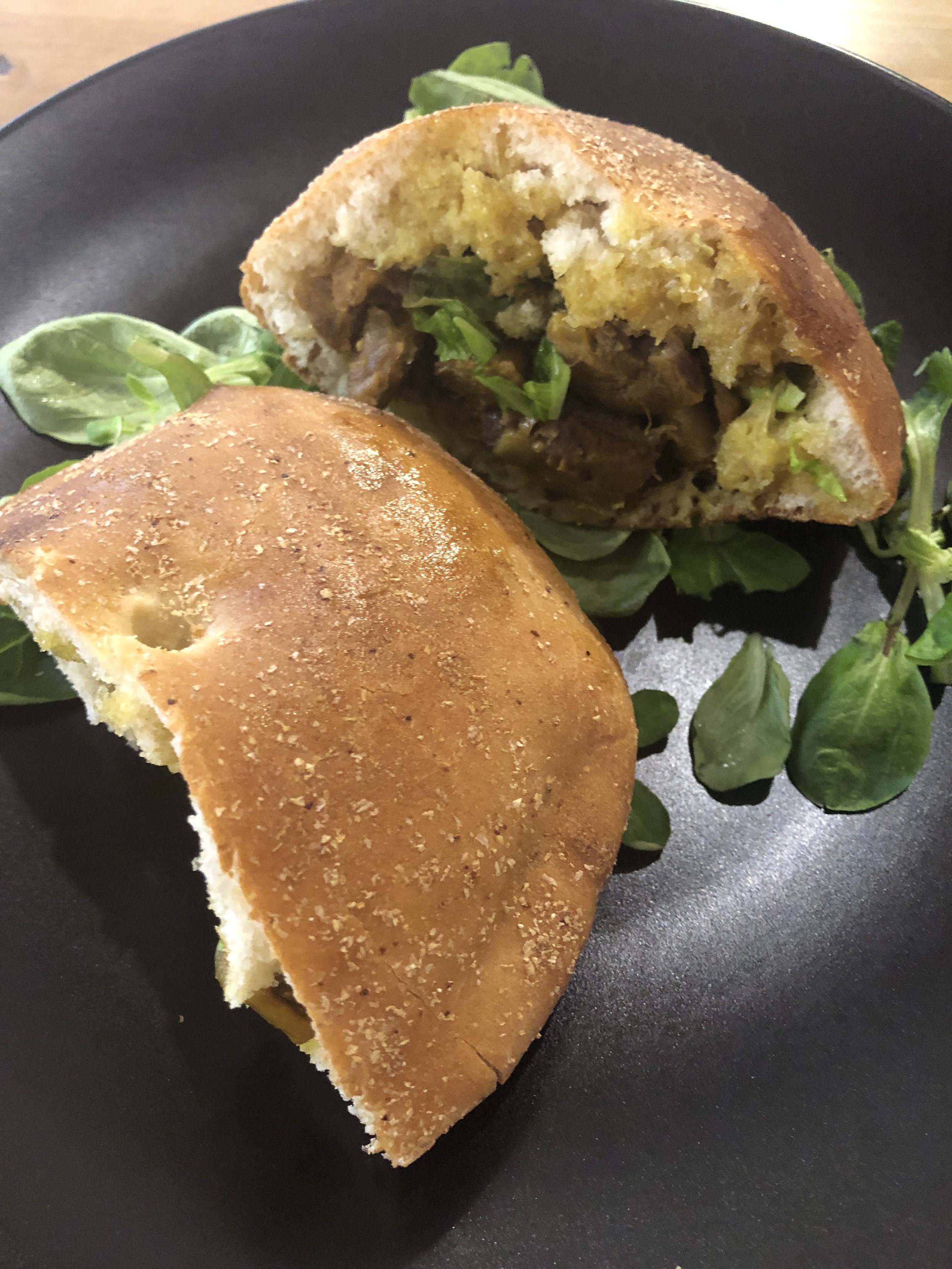Notable Noshes 2: A Tangia Tangent & the "Perfect" Croissant
A Tangia Tangent
In early October the Chef went to a climate conference in Marrakech and lucky me went with. On our first full day in Marrakech we went on an exhaustive and exhausting city tour with friendly guide Khalid. While I was interested in sites like the Majorelle Gardens (that vibrating cobalt blue!), the 16th Century Lazama Synagogue (that secretive tiled courtyard!) and the Kutubiyya mosque (solar powered!), it was Khalid’s story of tangia that made the deepest impression. And now, two months after our trip, that is the taste that lingers, but I likely will not meet tangia again as it is an “only in Marrakech” treat. Still, a year ago I had no idea I would be in Marrakech. More and more people are setting Morocco in their post-Covid destination sites, so tuck this tangia tangent away for a someday perfect sandwich in the heart of the Medina (old city).
Tangia is named for the small earthenware pot it cooks in. Moroccans or Marrakech stuff the pot full of beef or lamb (more likely beef), saffron, preserved lemon, ground cumin, garlic and just the smallest amount of olive oil and smen (Moroccan clarified butter—like Indian ghee). Because of the simplicity of the dish, Tangia is known as bent r’mad or the “bachelors’ dish,” something that men make. It takes little time or expertise to stuff a clay pot full of meat! Once the pot is covered the lid is wrapped tightly in parchment. And here’s where the process of making tangia gets interesting. Someone from the community will use a cart to take tangia pots to the local hammam, the bathhouse. There the fellow who stokes the coal fire that heats the water will nestle the pots well into the ashes. The tangia pots stay this way overnight, and because the meat is cooked long and slowly it becomes utterly tender, almost like a confit. The next day someone will collect all the ashy urns from the hammam and deliver them to their respective households. As fits the communal nature of cooking tangia, it is usually enjoyed in informal communal settings, family and friends breaking bread together (make that pulling apart the oily Moroccan m’smen flatbread). To serve, one simply overturns the urn and lets the fragrant meat spill out on a platter. Not for vegetarians, tangia isn’t even served with couscous or vegetables.
While I’m carnivorous and sometimes crave beef, which the Chef does not cook, I don’t long for platters of beef or lamb. I was delighted, then, when I had the chance to sample tangia through the vehicle of a sandwich, a perfect sandwich as it happens. Getting a snack or small sandwich is not easy to do in Marrakech; Because of the Muslim prohibition against alcohol, there are no bar snacks, because there are no bars. There are no places to simply get a coffee or the lovely Moroccan mint tea and small savories or pastries. Yet, one afternoon we were walking through the souk as I was doing some last minute shopping. Small ceramic bowls, colorful tea glasses, pointed leather slippers, street vendors sold the same items everywhere but for different prices, and I was exhausted with the constant negotiation. I needed a mint tea break immediately, and fortunately, we were standing in front of La Patisserie de la Terrasse des Epices—a bakery connected to La Terrasse des Epices restaurant across from our lovely hotel Riad Bliss. Why had I never noticed the clutch of small tables? A genuine café! I was eyeing the glass case of cookies when the Chef spotted “tangia sandwich” on the menu for merely 50 Moroccan dirham or roughly $5! We ordered one to share as it was close to dinner time. After some time, out came a small round sandwich of pillowy Moroccan bread stuffed with melt-in-your mouth beef tangia. I don’t think I’ve ever had a sandwich so indescribably perfect in flavor and texture. The Chef and I looked at each other in silent acknowledgement—a deep love of extraordinary food is one of our strongest bonds. We both put our sandwich halves down at the same time. Something this good should not be wolfed down but savored.
Less than two weeks after I bit into that glorious tangia sandwich, I was in Montreal visiting our son and continuing…
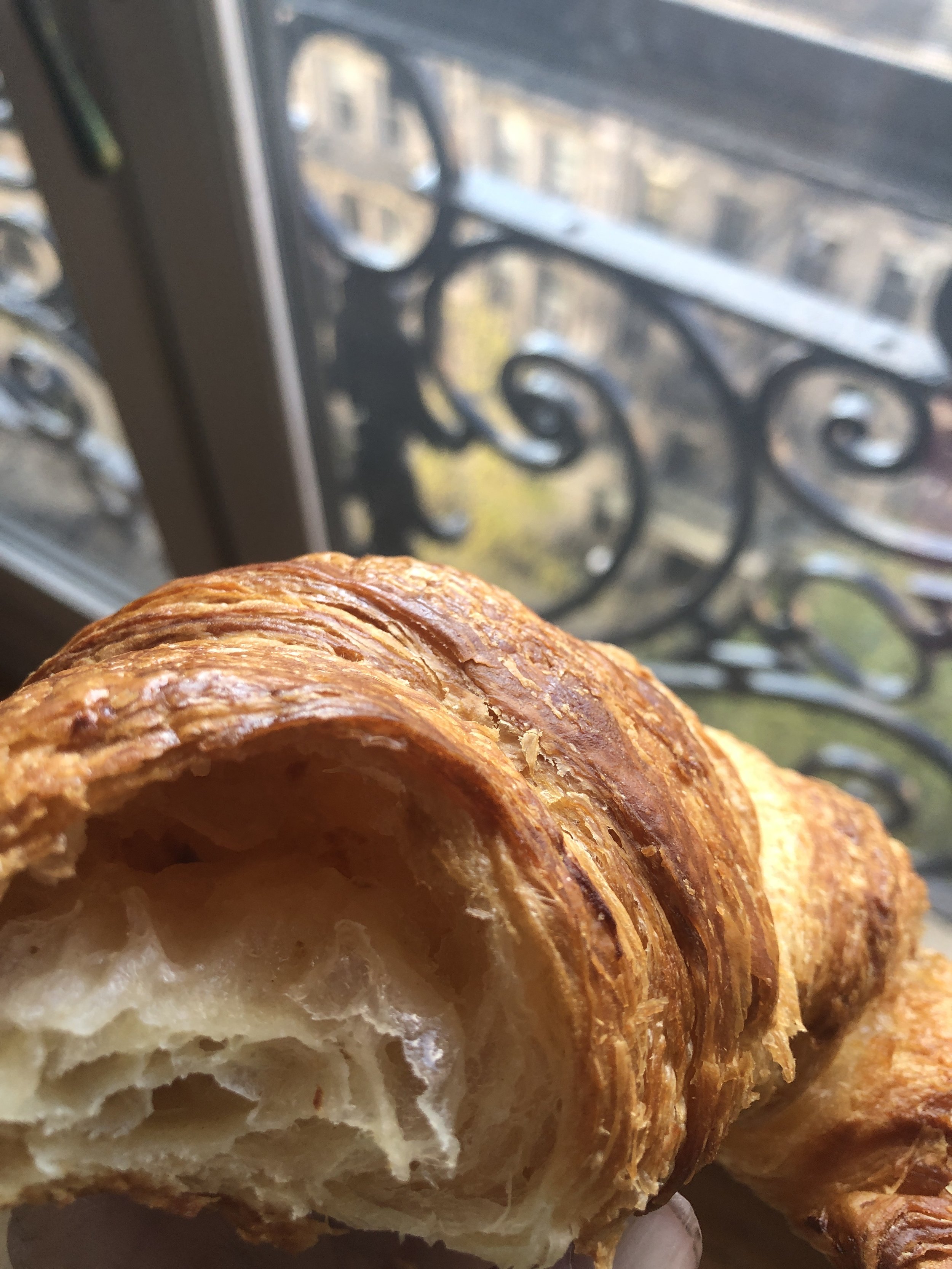
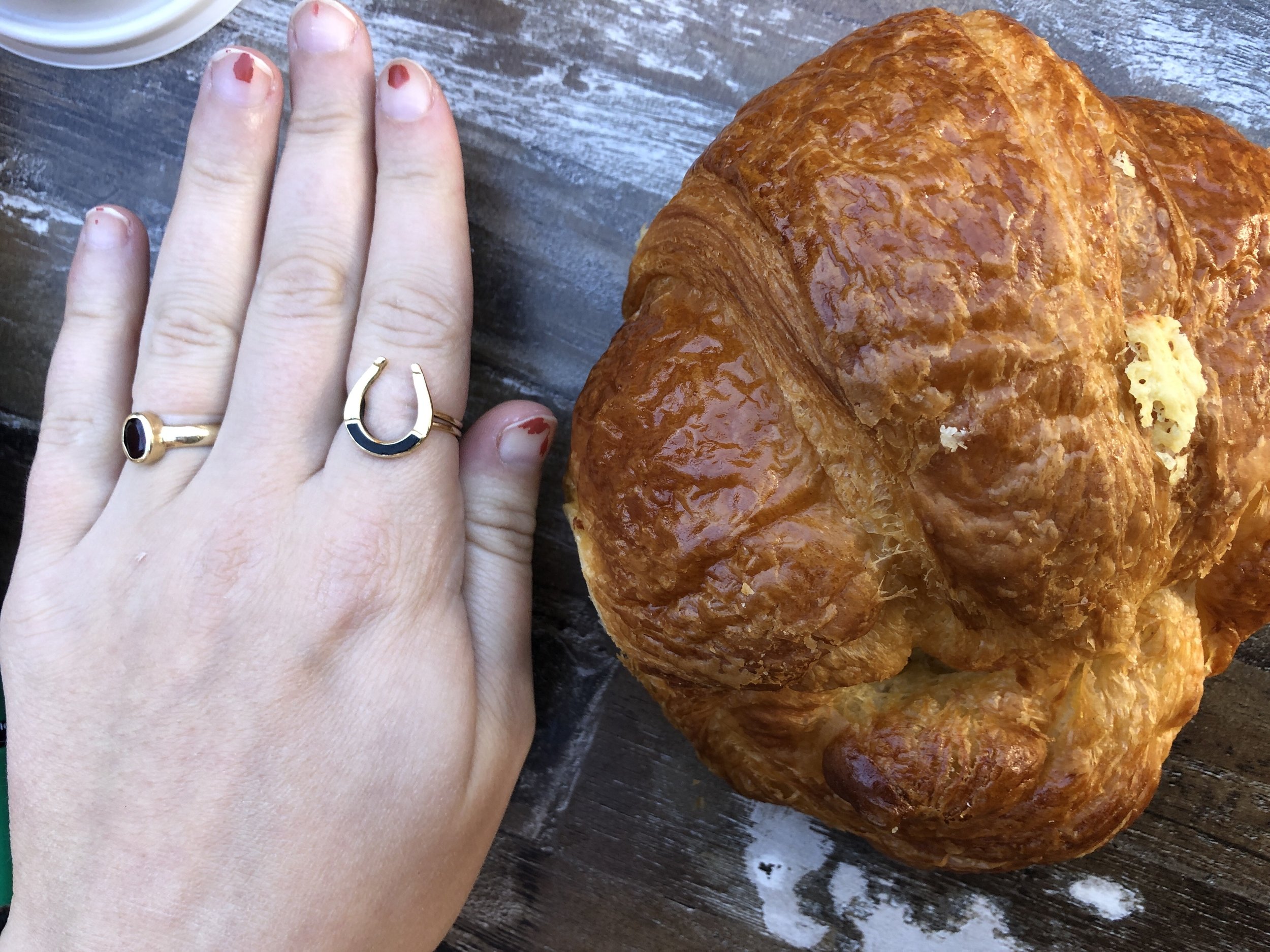
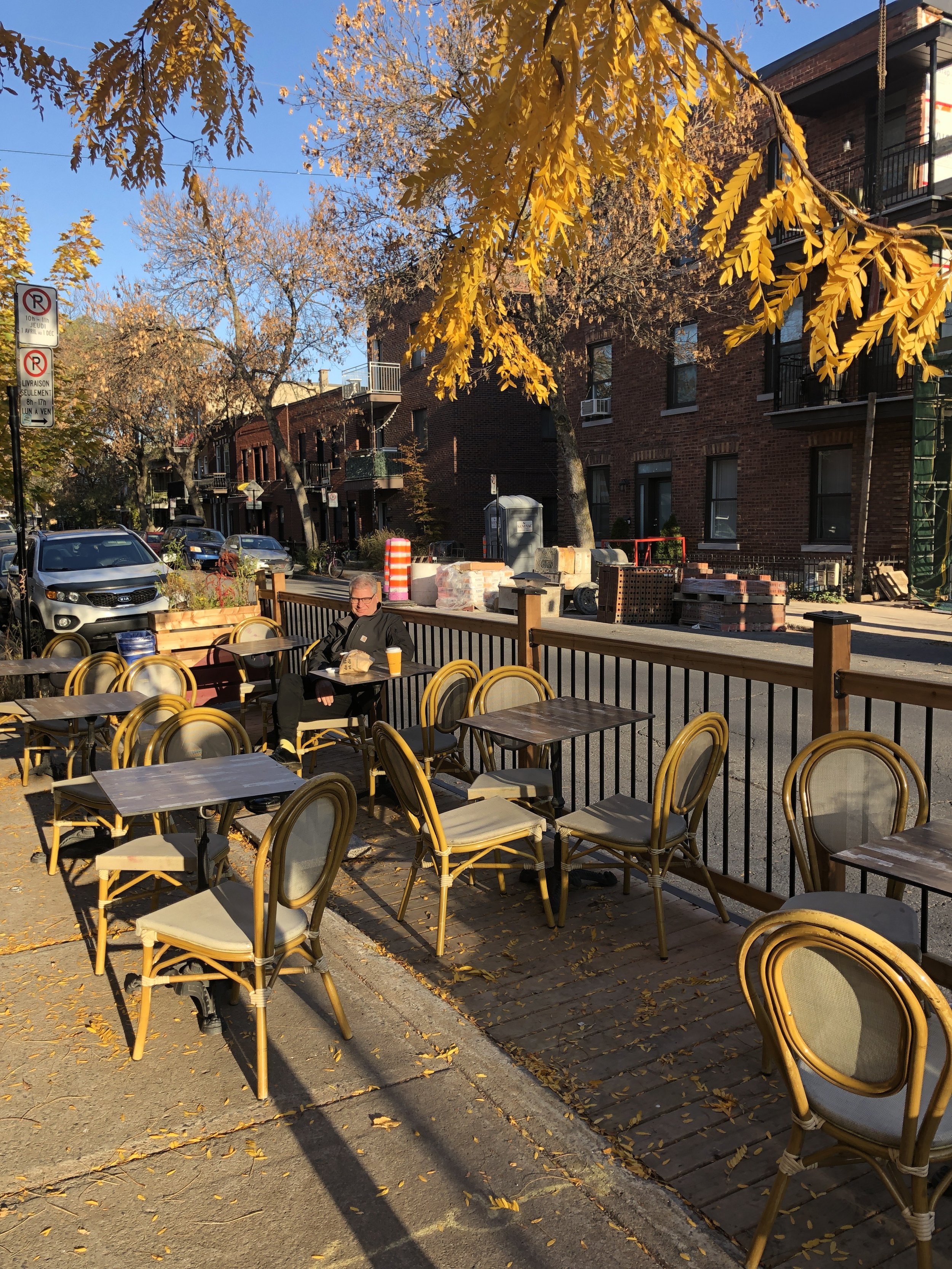
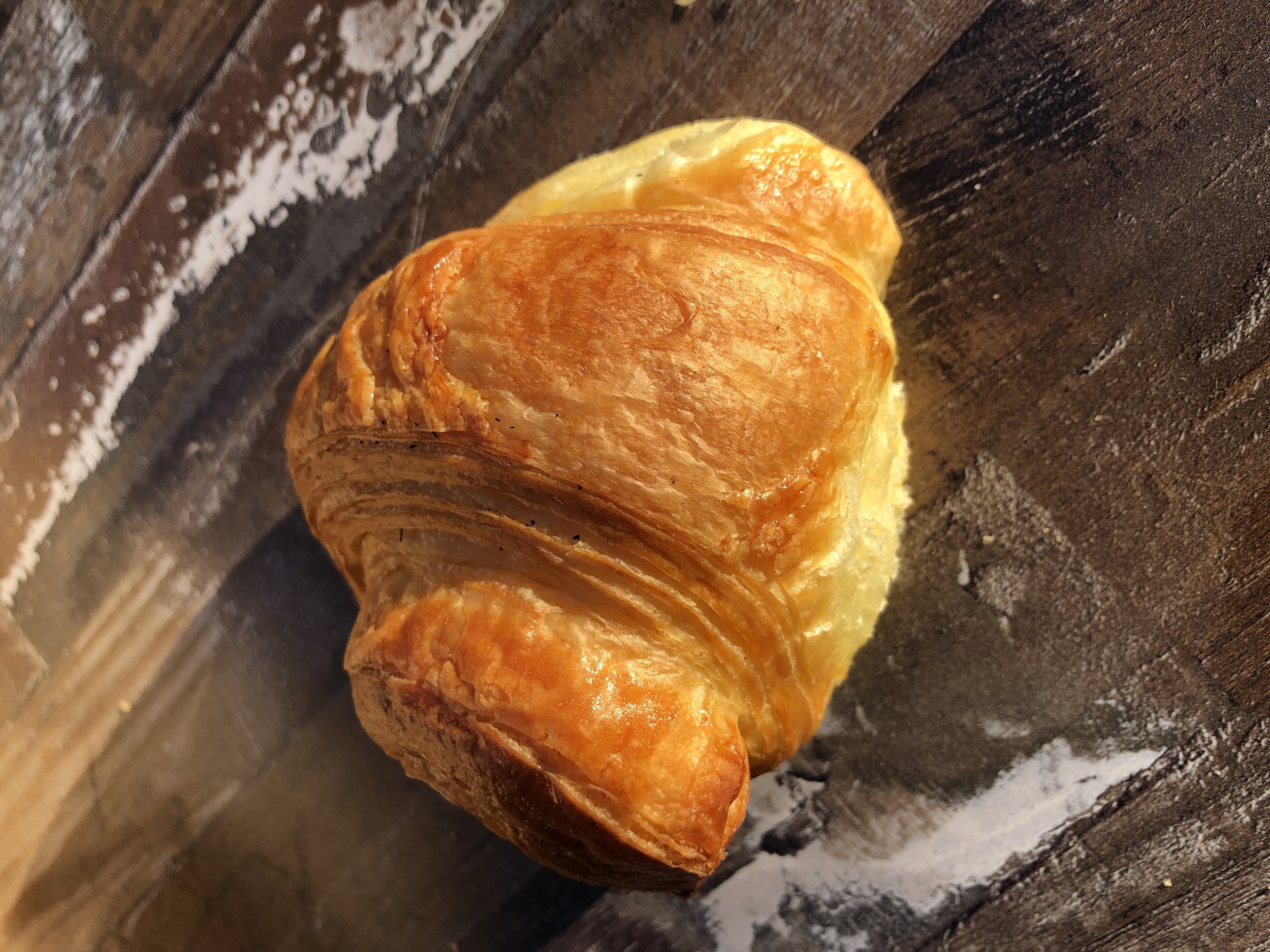
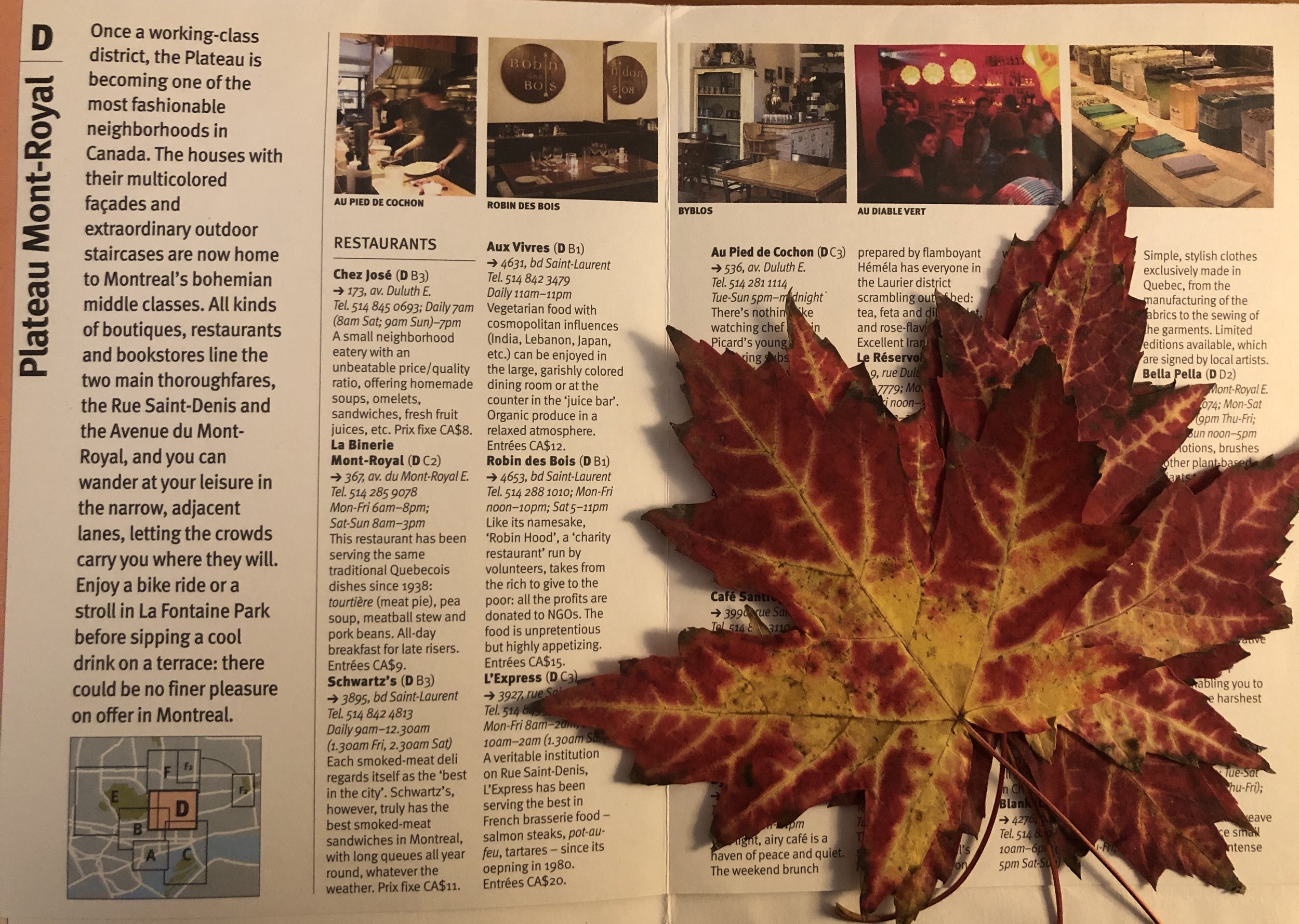
…The Hunt for the Perfect Croissant
I am always on the hunt for the perfect croissant. Judging by the Google search results for “hunt for the perfect croissant,” others are too—from former New York Magazine food critic Adam Platt, who explored two venues, trendy and traditional, and publicist Meg Parsont (and husband Danny) who went on a croissant tasting tour of the Upper West Side and reported their findings in The West Side Rag.
What makes a croissant perfect is the right combination of crisp somewhat flaky exterior and a dense, chewy interior, one in which you can see the multiple encircled folds of dough, some of which are translucent with butter. Since I last wrote about croissants here, I’m ashamed I said British fast casual food chain Pret a Manger had the “best croissant I ever et.” Made out of pre-rolled dough these so-called croissants are dense buttery coils that stretch when pulled, but they are not croissants. Similarly, the large eggy crescent-shaped concoctions at the Hungarian pastry shop are more akin to challah bread and can be enjoyed as such, with a tiny paper cup full of apricot jam. Just don’t call them croissants!
When visiting our son, Angus, in Montreal, a city in utter thrall to its French heritage, I was, as ever, on the hunt for the authentic and perfect croissant. First stop was a breakfast with my Montrealer cousin Jacques and his wife at Boulangerie Jarry. Their croissant was of the too-lacquered sort, shiny and almost hard-shelled on the outside. One bite into the admittedly dense and buttery interior, and there are pastry flakes all over your lap. So the next day we tried our son’s favorite bakery Boulangerie Froment et de Seve (the name means Wheat and Sap). While the staff was friendly, the croissants were large and doughy with no hint of the layering that defines a “perfect” croissant; many folks online accused the bakery of not using real butter, of being “over large, not buttery enough.” Indeed, as you can see in the photos above, the croissant is really big. While I have to concur with reviewers, I did enjoy the mini apple turnover, the baguette (which we took back to New York) and the light but buttery sable cookies, sold in bags. On the cool Autumn Sunday, I also enjoyed sitting outside in chairs reminiscent of the ones in Parisian cafes. Indeed, the light, filtering through golden leaves reminded me of the way golden light washes over the white facades of Paris buildings, but (see this video!) the traffic bollards and loud drilling behind us reminded me that we were definitively in Montreal! So far, my favorite boulangerie/café in Montreal is still Mamie Clafoutis on Rue St. Denis, where one sits upstairs in comfy seats while looking down at the bakers below. On this trip, daughter Julie and I arrived there at the end of a long day of shopping. We shared light, airy chouquettes and perfect snickerdoodles. I’ve had a Mideastern inflected rose-scented pudding and a dense chocolate mousse there. Since Mamie has always been an afternoon respite after walking the streets and alleys of Montreal, I’ve never sampled its croissants; I will next time.
After returning from our travels to New York City, I was in Cobble Hill’s newly expanded Le French Tart Deli where a chalkboard boasted “#1 Croissant in New York” (While I sung a paean to Le French Tart here when it first opened, I had focused on their quiche). I wedged my way to the back of the tiny épicerie (the bakery has expanded but the shop is as cutely hard-to-maneuver as ever) and bought two croissants ($3.75 ea) to freeze before eating the next morning. One bite into this baby, and I felt that my hunt was over. Only the croissant at Ceci Cela Patisserie, which I mentioned here, comes close. If you have a favorite venue that turns out “perfect croissants” please comment below. I will always be on the hunt!Stay tuned.

